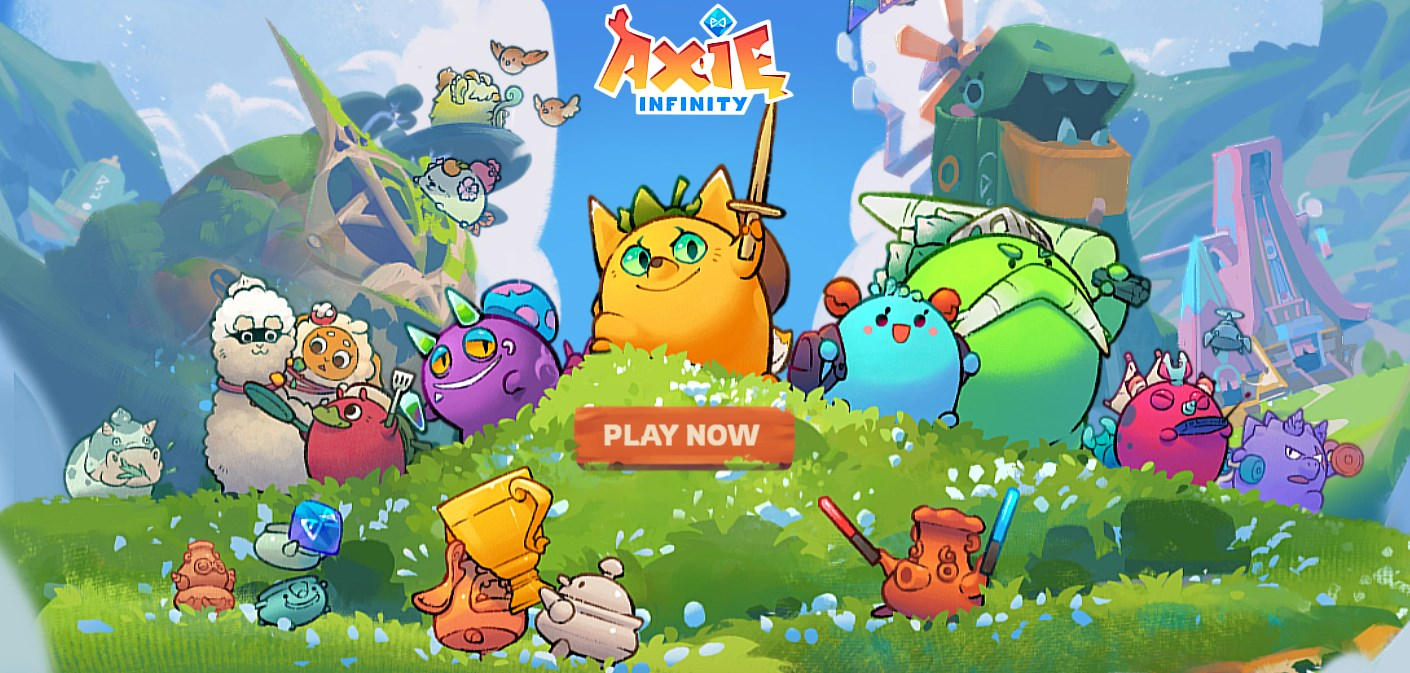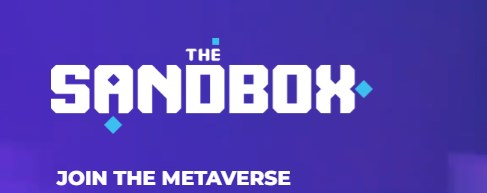The term “GameFi,” which stands for “Game Finance,” refers to a new concept that combines the worlds of gaming and decentralized finance (DeFi). It represents a ground-breaking fusion of cryptocurrency, blockchain technology, and game mechanics to open up new possibilities and improve experience.
Player ownership garnered a lot of traction in the blockchain community thanks to its promise to change traditional gaming into a more welcoming and rewarding ecology. The blockchain gaming market enables fresh methods for users to monetize their skills, assets, and gaming time by leveraging the DeFi fundamentals.
The idea of is one of GameFi’s fundamental ideas. GameFi gives players the ability to derive real value from their in-game activities, in contrast to traditional gaming, where players devote time and effort purely for amusement, players can gather uncommon or special digital assets that can be sold, traded, or used as security in financial transactions.
Additionally, GameFi enables decentralized platforms and markets where users can easily exchange in-game items with one another. Blockchain technology, which underpins these platforms, ensures the immutability, security, and transparency of transactions.
Additionally, GameFi integrates DeFi practices into gaming ecosystems, including lending, staking, yield farming, and liquidity mining. This enables users to make use of their digital assets by generating passive income or taking advantage of other investment opportunities.
By fusing conventional gaming with decentralized financing, it marks a paradigm leap in the gaming industry. By creating a decentralized economy within gaming ecosystems and introducing novel financial mechanisms, it enables players to profit financially from their in-game actions.
Understanding the Basics of GameFi
GameFi combines the worlds of gaming and decentralized money (DeFi). By integrating blockchain technology, cryptocurrencies, and financial mechanisms into gaming ecosystems, it marks a major shift in the gaming industry.
GameFi’s main attributes are:
Play-to-Earn: GameFi enables users to profit financially from their game play. GameFi permits users to gather rare or unique digital items that have real-world worth, in contrast to traditional gaming, where gamers only play for entertainment.
Digital Asset Ownership: To give players real ownership of their in-game assets, GameFi uses blockchain technology. Players have verifiable proof of ownership with non-fungible tokens (NFTs) and blockchain-based systems, guaranteeing security and transparency. Within the ecosystem, in game NFTs give players the freedom to freely trade, lend, or use their assets, unlike traditional video games.
Decentralized Marketplaces: It enables decentralized marketplaces where users may exchange their in-game goods with other users directly. A blockchain powers these marketplaces, doing away with the need for middlemen.
Financial Mechanisms: It integrates DeFi elements into gaming ecosystems including loan, staking, yield farming, and liquidity mining. By participating in numerous investment opportunities or passive income options, players can put their digital assets to work.
Differences between DeFi and the standard gaming industry:
GameFi distinguishes itself from conventional gaming by enabling users to derive real-world benefits from their gaming activities. It adds financial incentives and prizes for player participation, creating a more engaging and financially rewarding experience than traditional video games, which solely focus on entertainment.
The Evolution of GameFi
GameFi has experienced significant evolution and growth since its inception, transforming the gaming and decentralized finance landscape. Here are the key milestones:
- Inception and Early Exploration: The concept of GameFi emerged as blockchain use gained traction. Initial experiments involved integrating cryptocurrencies and blockchain into gaming ecosystems, paving the way for the fusion of gaming and decentralized finance.
- Play-to-Earn Games: The introduction of play-to-earn games marked a major breakthrough for blockchain games, offering gaming incentives. Projects like Axie Infinity gained widespread attention for allowing players to earn cryptocurrency by participating in gameplay and engaging with in-game assets.
- NFTs and Digital Asset Ownership: The rise of non-fungible tokens (NFTs) played a pivotal role in the growth of GameFi. NFTs enabled players to own unique and scarce assets, including in-game items, characters, and virtual real estate.
- Decentralized Marketplaces: The establishment of decentralized marketplaces for trading in-game assets further propelled the industry. Platforms like OpenSea and Rarible provided a decentralized and transparent environment for players to buy, sell, and exchange their assets, creating a vibrant secondary market.
- Integration of DeFi Mechanisms: The integration of decentralized finance mechanisms into GameFi expanded its potential. Projects like Yield Guild Games (YGG) enabled players to earn yield by lending their in-game assets or participating in liquidity mining.
- Broader Adoption and Investor Interest: It gained broader adoption and attracted significant investor interest, leading to increased funding and development. Major gaming studios, blockchain companies, and venture capital firms recognized the potential of GameFi and started investing in projects that merged gaming and DeFi.
- Expansion to Multiple Platforms and Genres: It also expanded beyond specific games or genres, encompassing a wide range of gaming platforms, including mobile, PC, and blockchain-based platforms. This diversification led to a more inclusive ecosystem, attracting players from various gaming backgrounds.
- Mainstream Recognition and Partnerships: GameFi received mainstream recognition as more players embraced the concept of earning real value from gaming. Partnerships between established gaming companies and blockchain projects further accelerated the growth of GameFi, bringing it closer to mainstream adoption.
- Continuous Innovation and Future Prospects: The industry continues to innovate with new game releases, DeFi integrations, and advancements in blockchain. The future prospects for GameFi are promising, with the potential to reshape the gaming industry.
The Role of Blockchain and DeFi in GameFi
Blockchain and decentralized finance (DeFi) technologies serve as the foundation for the ecosystem, enabling enhanced gaming experiences and unlocking new financial opportunities. Here’s some examples:
Blockchain Technology: Technology forms the underlying infrastructure for GameFi. It provides a transparent, secure, and immutable ledger that records all in-game transactions, asset ownership, and interactions. By leveraging blockchain, this ensures that assets and their ownership can be verified and trusted.
Decentralized Asset Ownership: It utilizes blockchain and non-fungible tokens (NFTs) to grant players verifiable ownership of their game assets. NFTs represent unique and indivisible assets that can be bought, sold, and traded on blockchain-based marketplaces.
Smart Contracts: Smart contracts, which are self-executing agreements with predefined rules and conditions, are fundamental components. They facilitate the automation of in-game transactions, enabling secure peer-to-peer interactions without the need for intermediaries.
Decentralized Marketplaces: It leverages decentralized marketplaces built on a blockchain. These marketplaces enable players to trade their in-game assets directly with other players, removing the need for centralized intermediaries. By leveraging blockchain’s transparency and security, decentralized marketplaces foster a vibrant secondary market.
DeFi Integration: It incorporates various decentralized finance (DeFi) mechanisms to enhance the financial opportunities within gaming ecosystems. Players can engage in activities such as staking, lending, yield farming, and liquidity mining.
Play-to-Earn Model: Blockchain and DeFi technologies enable the play-to-earn model in GameFi. Through the use of blockchain-based economies, players can earn valuable rewards by actively participating in gameplay.
Interoperability and Cross-Platform Compatibility: Blockchain facilitates interoperability and cross-platform compatibility in GameFi.
Exploring the GameFi Ecosystem
Each video games ecosystem comprises various stakeholders, including developers, players, investors, and other participants. Developers play a critical role in creating games, integrating blockchain and DeFi technologies.
In the GameFi world, there are different types of games, with play-to-earn GameFi games being particularly prominent. These games redefine the gaming model by allowing players to earn real value for their time and efforts in the game. These games provide economic incentives, typically in the form of cryptocurrencies or valuable in-game assets.
GameFi and NFTs
Non-fungible tokens (NFTs) play a crucial role within blockchain games, contributing to the value proposition and unique dynamics of platforms. Here’s a brief explanation:
Proof of Ownership: NFTs provide verifiable proof of ownership for unique and indivisible in-game assets. This gives players confidence in the authenticity, scarcity, and value of their digital possessions. NFTs enable players to establish true ownership over rare items, characters, virtual real estate, and other unique assets.
Tradable Digital Assets: NFTs enable the seamless trading and exchange of assets within ecosystems. Players can freely buy, sell, and trade their NFT-based in-game assets with other players on decentralized marketplaces, enabling players transactions that occur directly between participants.
Interoperability and Portability: NFTs promote interoperability and portability across different platforms and games. Players can use their NFTs acquired in one game or platform and transfer them to another, unlocking new opportunities and experiences.
Example: In the game Axie Infinity, players can own and trade NFT-based creatures known as Axies. Each Axie possesses unique traits and characteristics, making them distinct and valuable. Players can buy, breed, and sell Axies on decentralized marketplaces.
Case Studies: Successful GameFi Projects
The gaming and blockchain sectors have taken a big interest in a number of GameFi projects that have been successful. Here are a few instances:
Axie Infinity

Axie Infinity is a popular play-to-earn game that has attracted a lot of interest. It enables users to gather, breed, and engage in combat with adorable NFT-based assets called Axies. The following key elements are responsible for its success:
Axie Infinity offered a “play-to-earn” paradigm where gamers could earn cryptocurrencies by actively taking part in gameplay and finishing in-game objectives.
NFT-based Ownership: Because each Axie is an NFT, players can buy or sell their Axies on decentralized markets and have proof of ownership.
Decentraland:

Users can create, discover, and make money from virtual experiences on this blockchain-based virtual reality network. The following key elements are responsible for its success:
Decentraland enables users to acquire virtual land as NFTs, offering a venue for artistic expression, virtual companies, and revenue-generating opportunities. Some virtual land has been a signifcant money making asset.
The platform encourages a vibrant user-generated content ecosystem by allowing users to produce and exchange their own assets.
The Sandbox

Players can develop, own, and earn money from their gaming experiences and assets in the decentralized virtual world known as The Sandbox.
The Sandbox has play-to-earn components that let users gain rewards and money by producing and taking part in user-generated experiences and content.
The platform offers easily accessible tools for making 3D voxel assets, such as VoxEdit, as well as a market place where users can buy, sell, and trade these assets. This encourages user innovation and monetization.
The Sandbox has established alliances and obtained licensing with well-known businesses and intellectual properties, allowing users to produce experiences and assets with recognizable themes and characters. Some players generate passive income as well.
The Potential and Challenges
A variety of possible advantages and opportunities are provided by these games for investors, creators, and gamers alike:
Players:
Earning Real Value: It gives gamers the chance to monetize their gaming talents and time by allowing them to receive real-world value for their gaming activity.
True Asset Ownership: Players that use NFTs get verifiable ownership of in-game items, giving them a sense of value and the freedom to exchange or use them as they see fit.
Game Developers:
It offers creators new revenue sources outside of typical game sales because users can pay money on in-game items or take part in DeFi activities in these GameFi projects.
Enhanced Player Engagement: By include financial incentives, game designers can increase player retention and engagement, which will help their games succeed and endure.
NFT Marketplaces: By taking a cut of sales or paying transaction fees, developers can profit from the second-hand markets where players buy and sell in-game goods.
Investors:
Financial Growth Potential: As the gaming business expands and draws a wider user base, it offers investment opportunities with the potential for substantial rewards.
By funding initiatives, investors may take advantage of the burgeoning blockchain and gaming industries while diversifying their portfolios.
Early Adoption Advantage: Those that invest in innovative initiatives early may reap the rewards of the rising value of the assets, tokens, or businesses that make up the ecosystem.
The sector does, however, also face a number of dangers and difficulties that demand attention:
The regulatory landscape for cryptocurrencies, NFTs, and GameFi games is currently developing and could have an impact on the development and management of the sector.
The inherent volatility of the cryptocurrency market has the potential to have an impact on the value of investments and in-game assets, offering dangers to both players and investors.
As the sector becomes a target for potential breaches and scams, the security of blockchain-based platforms, wallets, and marketplaces continues to be a major concern.
Security and Regulation
Blockchain games present regulatory environment is still developing and differs in many regions. Because of this, the security and regulation of these games is a “moving target.”
Cryptocurrency, blockchain, and GameFi regulations can vary widely. While some countries have adopted new technologies and created favorable regulatory frameworks, others are still deciding how to proceed or placing limitations.
Adherence to AML and KYC laws is becoming more and more crucial. Platforms and initiatives might need to put in place strict identity verification policies to guarantee legal compliance.
In the blockchain games industry, regulators are concentrating on protecting consumers. This involves protecting players’ assets, making sure transactions are transparent, and dealing with any possible fraud or scams inside the sector.
Regarding safety precautions and possible threats in the sector:
Users are advised to use secure wallets to keep their digital valuables safe, regardless of the blockchain game you are playing.
Smart Contract Audits: To find and address potential vulnerabilities, developers should do rigorous audits of their assets. This safeguards user assets within the ecosystem and helps avoid exploitation.
Platform Security: To safeguard user data, prevent unwanted access, and defend against hacking attempts, systems must have strong security measures.
Fraud and scams: The sector may draw bad actors looking to trick customers or start up shady projects. Users and investors need to be cautious, and be on the lookout for any frauds or Ponzi schemes.
Community and Economic Models in GameFi
In GameFi initiatives, the importance of the community cannot be overstated because it is crucial to engagement, growth, and ecosystem orientation.
Blockchain games depend on enthusiastic community involvement. Players, investors, and other stakeholders participate in discussions, offer input.
Many initiatives include concepts of community governance that let participants in the decision-making process take part. The community can have an impact on things like platform updates, rule modifications, and resource distribution.
Different economic strategies are used by initiatives to support their ecosystems and compensate users. Typical models include:
Play-to-win: By actively taking part in gaming, fulfilling objectives, or reaching in-game milestones, players can win rewards or cryptocurrencies.
Tokenomics: Within the ecosystem, native tokens are frequently employed as utility tokens that offer a range of advantages like access to exclusive features, voting rights, or staking rewards.
How to Get Involved in GameFi
To get started with blockchain games as a player or investor, consider the following practical advice:
- Research Projects: Thoroughly research different blockchain games to understand their gameplay mechanics, tokenomics, team composition, and community engagement. Assess the project’s whitepaper, roadmap, and social media presence to gain insights into its potential.
- Understand the Risks: Recognize that investments and gameplay involve risks. Evaluate factors such as market volatility, regulatory uncertainties, project viability, and potential security vulnerabilities.
- Engage with the Community: Join official community channels, such as Discord or Telegram groups, to connect with other players and investors.
- Stay Informed: Keep up with industry trends, news, and updates related to GameFi. Follow reputable sources, industry influencers, and official project announcements to stay informed about the space.
Conclusion: The Future
GameFi projects conintue to be an area of interest by investors, players, and developers. Blockchain games continue to grow and will ultimately by more common. Allowing for traders to earn rewards by playing games, this makes for a much more dynamic environment. In game currency is used to make transactions and earn staking rewards. This opens up a whole new way to start playing games, far beyond what the traditional gaming industry offers.
This is a very new area of gaming environment, and a vast majority of these games will struggle. However, as time goes on and the idea of a blockchain game becomes more common, there should be huge winners out there. Blockchain technology continues to expand, so the gaming experience should contiue to press the boundaries going forward.
What is the function of GameFi?
The function of GameFi projects is to offer the ability to earn rewards and earn tokens for playing games. This also works in a decentralized environment, meaning that if an asset is in demand, traders can get even more rewards, either exchanging the virtual tokens, virtual lands, or such items.
Can you make money with GameFi?
Yes, depending on the video games being played. If you earn in game rewards, some of these crypto assets are valuable to other blockchain based game players. However, other games will have differing demand for their digital currency, and GameFi tokens.
The content provided here is for informational purposes only. It is not intended as personal investment advice and does not constitute a solicitation or invitation to engage in any financial transactions, investments, or related activities. Past performance is not a reliable indicator of future results.
The financial products offered by the Company are complex and come with a high risk of losing money rapidly due to leverage. These products may not be suitable for all investors. Before engaging, you should consider whether you understand how these leveraged products work and whether you can afford the high risk of losing your money.
The Company does not accept clients from the Restricted Jurisdictions as indicated in our website/ T&C. Some services or products may not be available in your jurisdiction.
The applicable legal entity and its respective products and services depend on the client’s country of residence and the entity with which the client has established a contractual relationship during registration.




